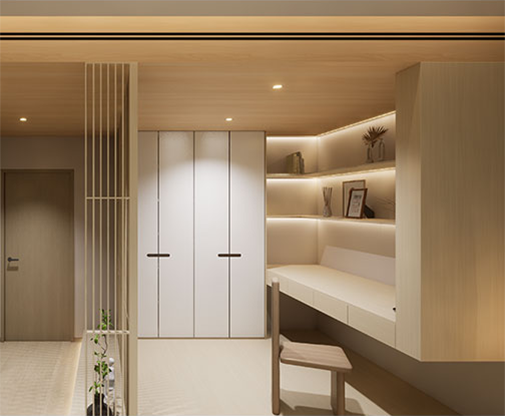Plywood, a versatile and widely used material in construction and furniture design, often carries a reputation for being purely functional. However, with the right techniques and creative approaches, plywood can be transformed into a stunning visual element that enhances any space. In this article, we will explore various methods to beautify plywood, ensuring that it not only serves its practical purpose but also adds an artistic touch to your projects.
Understanding Plywood: The Canvas for Creativity
Before diving into beautification techniques, it’s essential to understand the nature of plywood. Composed of thin layers of wood veneer glued together, plywood is known for its strength, durability, and cost-effectiveness. However, its natural appearance can sometimes be perceived as plain or industrial. By employing specific methods, you can elevate its aesthetic value and create unique pieces that stand out.
- Surface Preparation: The Foundation of Beauty
The first step in beautifying plywood is proper surface preparation. This involves sanding the surface to create a smooth finish, which is crucial for any subsequent treatments. Use a combination of coarse and fine-grit sandpaper to eliminate imperfections and achieve a polished look. Pay special attention to the edges, as they can significantly impact the overall appearance.
Tips for Effective Sanding:
- Start with 80-grit sandpaper to remove rough spots.
- Progress to 120-grit for a smoother finish.
- Always sand in the direction of the wood grain to avoid scratches.
- Staining: Enhancing Natural Beauty
Staining is one of the most effective ways to enhance the natural beauty of plywood. It allows you to highlight the wood grain while adding color and depth. Choose a high-quality wood stain that complements your design aesthetic.
Application Techniques:
- Wipe-On Method: Use a clean cloth to apply the stain evenly, ensuring you work in small sections to avoid streaks.
- Brush Application: For a more controlled application, use a brush, but be cautious of brush strokes. Follow up with a cloth to wipe off excess stain.
- Painting: A Bold Transformation
If you’re looking for a more dramatic change, painting plywood can provide a fresh and modern look. Opt for high-quality acrylic or latex paint for durability and ease of application.
Painting Tips:
- Primer First: Apply a primer to seal the wood and improve paint adhesion.
- Multiple Coats: For vibrant colors, multiple thin coats are preferable to a single thick coat.
- Finish Options: Consider using a matte, satin, or glossy finish depending on the desired effect.
- Texturing: Adding Dimension
Texturing plywood can create a unique tactile experience. Techniques such as routing, carving, or using stencils can add dimension and interest to flat surfaces.
Creative Texturing Ideas:
- Router Patterns: Use a router to create intricate designs or grooves.
- Stencil Art: Apply stencils with paint or texture paste for decorative patterns.
- Natural Textures: Incorporate natural elements like wood burns or distressing for a rustic look.
- Sealing and Finishing: Protecting Your Work
After beautifying your plywood, it’s crucial to protect your investment. A clear sealant or finish will safeguard against moisture, scratches, and wear.
Recommended Sealants:
- Polyurethane: Offers excellent durability and comes in various finishes.
- Varnish: Provides a warm glow while enhancing the wood grain.
- Oil Finishes: Such as tung or linseed oil, penetrate the wood for a natural look.
- Incorporating Accessories: The Final Touch
To further enhance the beauty of your plywood projects, consider incorporating accessories. Hardware, such as decorative hinges or handles, can add character. Additionally, pairing plywood with other materials like metal or glass can create a striking contrast.
Conclusion: The Art of Beautifying Plywood
Beautifying plywood is not just about aesthetics; it’s about transforming a functional material into a work of art. By employing techniques such as staining, painting, texturing, and sealing, you can elevate plywood from a simple construction material to a stunning centerpiece in your home or workspace. Whether you’re a DIY enthusiast or a professional designer, these methods will help you unlock the full potential of plywood, allowing it to shine in its own right.




More Stories
Top 5 Advantages of Using Film Faced Plywood in Concrete Formwork
Essential Tips for Maintaining Aluminum Profiles After Professional Mechanical Polishing
High-Temperature Industrial Auto Paint Booth for Precision Finishing